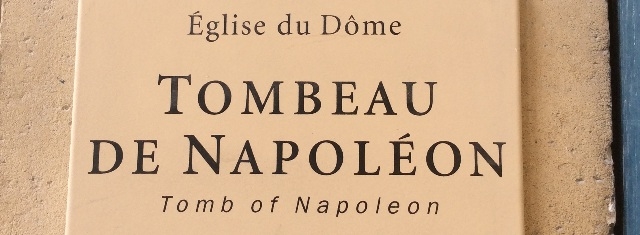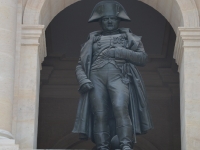Miscellaneous
THE DOME CHURCH CONTAINING THE TOMB OF NAPOLEON 1ST - MOST FAMOUS EMPEROR
THE ROYAL CHAPEL

(Source: © Ruby BIRD & Yasmina BEDDOU)
USPA NEWS -
The Royal Chapel was built between 1677 and 1706. The interior decorations produced at that time glorify Louis XIV, the Monarchy and his armies. Known as the Temple de Mars during the Revolution, the Dome Church became a military Pantheon during the reign of Napoleon Bonaparte...
The Royal Chapel was built between 1677 and 1706. The interior decorations produced at that time glorify Louis XIV, the Monarchy and his armies. Known as the Temple de Mars during the Revolution, the Dome Church became a military Pantheon during the reign of Napoleon Bonaparte, with the installation of the Turenne tomb (1800) and a funeral monument to Vauban (1807-1808).
In 1800, the First Consul ordered the body of Turenne, one of the most famous marshals of France in the Great Century, to be transferred under the Dome, in a monumental tomb. After becoming the Emperor of the French, he repeated this process on 26 May 1808, transferring Vauban's heart to a Mausoleum erected opposite Turenne's.
In 1800, the First Consul ordered the body of Turenne, one of the most famous marshals of France in the Great Century, to be transferred under the Dome, in a monumental tomb. After becoming the Emperor of the French, he repeated this process on 26 May 1808, transferring Vauban's heart to a Mausoleum erected opposite Turenne's.
In 1847, as part of the architect Visconti's works in the crypt designed to receive Napoleon's tomb, this monument was replaced by a black marble coffin made by sculptor Antoine Etex. Nowadays, alongside Napoleon I's tomb, the Dome contains the graves of his son, l'Aiglon, the King of Rome, his brothers Joseph and Jerôme Bonaparte, the Generals Bertrand and Duroc, and the two famous marshals of the first half of the 20th century, Foch and Lyautey.
On May 1821, Napoleon I passed away on the Island of Saint Helen, where he had been in exile since 1815. He was buried near a spring, in the shade of a few weeping willows, in the "Valley of Geraniums". His remains stayed there until 1840. In 1840, King Louis-Philippe decided to transfer the Emperor's body. French sailors, under the command of the Prince of Joinville, brought his coffin to France aboard the ship "Belle Poule". A state funeral accompagnied the return of Emperor Napoleon I's ashes, which were transferred to Les Invalides on 15 december 1840 while the tomb was being built.
Pantheon Military Installation Church Revolution Temple De Mars Monarchy Glorify Decorations Louis Xiv Royal Chapel Napoleon I The Tomb The Dome Des Invalides Napoleon Bonaparte Ruby Bird
Liability for this article lies with the author, who also holds the copyright. Editorial content from USPA may be quoted on other websites as long as the quote comprises no more than 5% of the entire text, is marked as such and the source is named (via hyperlink).






